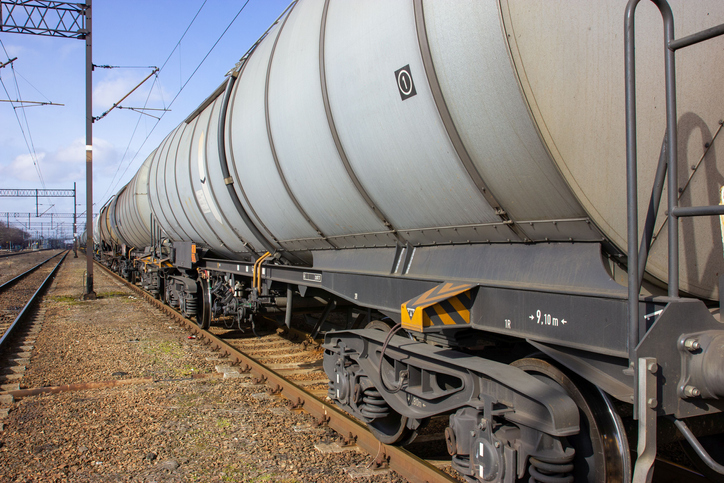The Trump administration finalized regulations to allow liquefied natural gas (LNG) to be shipped across country by rail for the first time ever without the need for special permits.
Natural gas is a key energy source in the United States and a growing fuel source around the world. The United States is the world’s largest producer of natural gas, supplying approximately 33 percent of the primary energy for the country.
Relatively recent innovations in fracking and horizontal drilling technologies have unlocked previously inaccessible reserves of natural gas and oil. This has produced a growing supply of the two resources, resulting in the United States becoming virtually energy-independent and exporting natural gas to other nations. Simultaneously, the substitution of relatively clean-burning natural gas for other fuels has resulted in emissions of air pollutants regulated by the U.S. Environmental Protection Agency falling significantly.
Pipeline Blockages, Rail Response
Limited supplies of LNG are transported by trucks daily, with the vast majority of natural gas being delivered through pipelines in gaseous form.
Long-running lawsuits filed by environmental groups and state governments controlled by Democratic governors who are opposed the increasing use of natural gas on the grounds that it is a greenhouse gas supposedly contributing to dangerous climate change, have prevented or slowed the expansion of oil and natural gas pipelines even as supplies have grown. Such lawsuits have blocked natural gas shipments even to states where natural gas is desired when the pipeline would have to cross states that object to natural gas use.
The Trump administration’s action is an attempt to remove the barriers to natural gas use by utilities in states that need more natural gas to meet increasing clean air standards but that have been unable to access supplies due to political limitations on pipeline capacity. The rule will come into force 30 days after it was finalized on June 19.
Rules Set Safety Standards
The U.S. Department of Transportation established a set of safety requirements for the rail cars used to transport LNG by rail, to ensure LNG shipments don’t create undue risk.
Among those new regulations, train cars carrying LNG will have to have thicker outer tanks made of steel with a greater puncture resistance, beyond the standard tank car design that has been established for decades to ship other flammable cryogenic materials such as liquid ethylene and liquid ethane. In addition, LNG rail cars must have improved braking technologies and must be set up to allow “remote monitoring of the pressure and location of LNG tank cars.”
The new safeguards will increase access to natural gas where desired, while minimizing any potential dangers from rail transport said Transportation Secretary Elaine Chao in a statement announcing the finalized rule.
“The department’s new rule carefully lays out key operational safeguards to provide for the safe transportation of LNG by rail to more parts of the country where this energy source is needed,” Chao said.
Sterling Burnett, Ph.D. (hsburnett@heartland.org) is the managing editor of Environment & Climate News.
